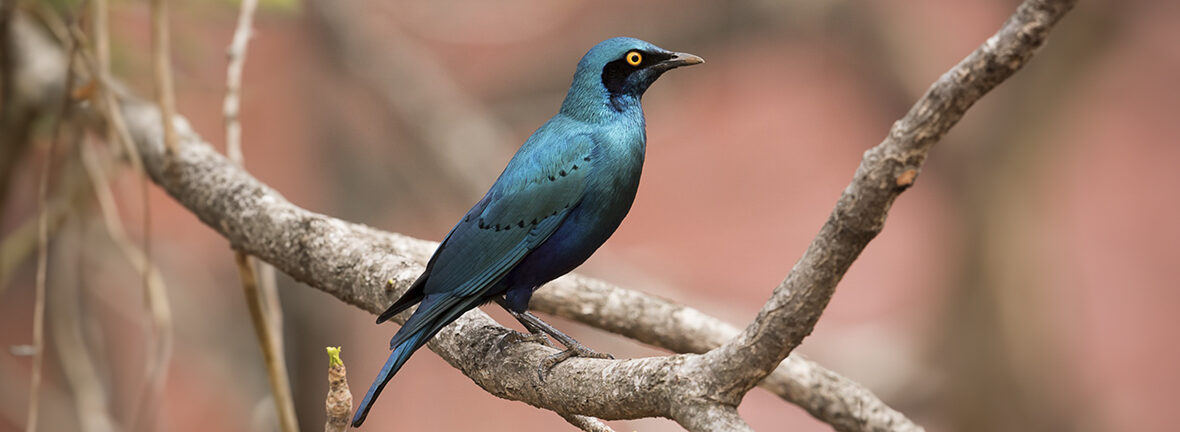
The greater blue-eared glossy starling, aka greater blue-eared starling, is a rather common species of open woodland bird that hails from Africa; more specifically Senegal on east to Ethiopia, south through eastern Africa, over to northeastern South Africa, and Angola. With a stable and abundant population, and no major threats, these birds are listed as Least Concern by the IUCN.
First the Stats…
Scientific name: Lamprotornis chalybaeus
Weight: Up to 3.74 ounces
Length: Up to 8.66 inches
Wingspan: Up to 15.8 inches
Lifespan: Up to 20 years
Now on to the Facts!
1.) These birds engage in some seasonal migrations.
2.) There are 4 subspecies of these starlings: Lamprotornis chalybaeus chalybaeus — Sahel region, Lamprotornis chalybaeus cyaniventris — northeastern Africa, Lamprotornis chalybaeus nordmanni — southern Africa, and Lamprotornis chalybaeus scyobius — central and East Africa.
3.) Populations from southern Kenya on south are smaller than northern populations, and are occasionally considered to be a separate subspecies.
4.) They have a range of musical and/or grating calls, however the most familiar is a nasal sounding “squee-ar”.
5.) These starlings will nest in holes inside trees, either naturally occurring or those created by woodpeckers or barbets. They will also nest inside the larger stick nests of the sacred ibis or Abdim’s stork.
But wait, there’s more on the greater blue-eared glossy starling!
6.) Females lay up to 5 eggs that hatch in up to 14 days.
7.) Chicks fledge and leave the nest in up to 23 days.
Did you know…?
This species is often parasitized by the great spotted cuckoo and occasionally by the greater honeyguide.
8.) These birds are very gregarious and usually gather into large flocks, often times with other starlings.
9.) Just like other starlings, the greater blue-eared starling is an omnivore (eats plant and animal matter), that takes a wide range of invertebrates, seeds, berries (especially figs), but is diet is mainly insects taken from the ground.
10.) They are known to perch on livestock, feeding on insects that are disturbed by the animals while on the move, and occasionally they will remove ectoparasites, like biting flies and ticks.
11.) The greater blue-eard glossy starling is diurnal (active during the day).
Now a Short Greater Blue-Eared Glossy Starling Video!
Be sure to share & comment below! Also, check out the Critter Science YouTube channel. Videos added regularly!
Want to suggest a critter for me to write about? Let me know here.
Some source material acquired from: Wikipedia & IUCN
Photo credit: Adrian J. F. Craig and C. J. Feare – Birds of the World



